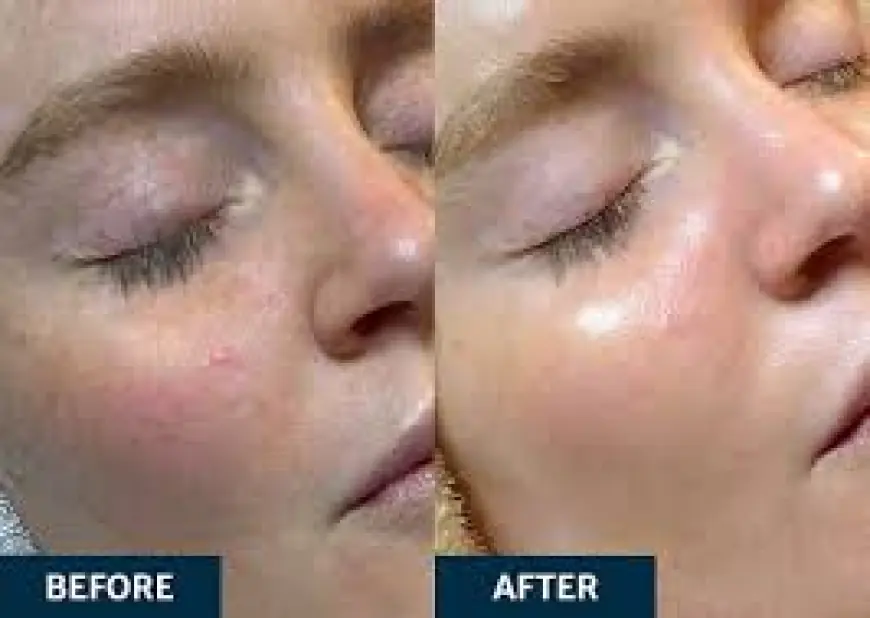How Does HydraFacial Compare to Chemical Peels?
Experience HydraFacial’s gentle vortex technology that removes impurities and infuses nourishing serums for refreshed, glowing skin instantly.

When exploring advanced skincare treatments, one of the most common comparisons people make is how does HydraFacial compare to chemical peels? Both options are designed to exfoliate, renew, and brighten the skin, but they work in distinctly different ways. HydraFacial treatment in Dubai(علاج هيدرا فيشل في دبي) is a non-invasive, multi-step treatment that combines cleansing, exfoliation, extraction, and hydration, while chemical peels rely on acid-based solutions to remove dead skin layers and stimulate regeneration. Each treatment has its place in skincare, but understanding their differences is key to choosing the right one based on your skin type, goals, and comfort level.
The Importance of Choosing the Right Treatment:
Knowing how does HydraFacial compare to chemical peels helps you align your skincare routine with your skin's unique needs. Chemical peels can offer deep resurfacing, making them ideal for concerns like pigmentation, fine lines, and acne scars—but they may come with peeling, redness, and downtime. HydraFacial, on the other hand, offers a gentler alternative with immediate glow and no recovery period. Your choice depends not only on desired results but also on how much downtime you're willing to tolerate and how your skin reacts to different forms of exfoliation.
How Each Treatment Works?
HydraFacial Technology
HydraFacial uses a device equipped with patented Vortex-Fusion technology to cleanse, exfoliate, extract, and infuse the skin with serums. It combines mechanical and liquid exfoliation, removing debris and impurities while deeply hydrating the skin.
Chemical Peel Action
Chemical peels use acids—such as glycolic, salicylic, or trichloroacetic acid (TCA)—to chemically exfoliate the skin. These acids dissolve the bonds between dead skin cells, allowing layers to shed and reveal fresher skin beneath. The intensity can vary from light to deep depending on the formulation.
Key Differences
-
HydraFacial is customizable, non-invasive, and suitable for most skin types, even sensitive skin.
-
Chemical peels can be more aggressive, often requiring pre- and post-care and leading to visible peeling or flaking.
Risks and Considerations:
Even though both treatments offer great benefits, they come with their own considerations:
-
HydraFacial Risks:
-
Temporary redness or tightness
-
Mild skin sensitivity to active ingredients
-
Minimal risk overall due to the non-invasive nature
-
-
Chemical Peel Risks:
-
Skin peeling, redness, or flaking (especially with medium to deep peels)
-
Increased sun sensitivity
-
Potential irritation, especially for sensitive or darker skin tones
-
Risk of hyperpigmentation or scarring if not performed correctly
-
HydraFacial treatment(علاج هيدرا فيشل) is generally safer for more people, while chemical peels should be chosen carefully based on your skin's tolerance and recovery capacity.
Benefits of Each Treatment Option:
-
HydraFacial Advantages:
-
Instant glow and hydration
-
No downtime
-
Comfortable experience
-
Suited for regular maintenance
-
Customizable with boosters for anti-aging, brightening, or acne
-
-
Chemical Peel Advantages:
-
Deeper resurfacing potential
-
Effective for age spots, sun damage, and deep acne scars
-
Stimulates collagen over time
-
Can offer longer-lasting results after a series of sessions
-
Choosing between the two often comes down to whether you're looking for a gentle, hydrating treatment or a more intensive resurfacing experience.
Frequently Asked Questions:
Can I Combine HydraFacial and Chemical Peels?
Yes, but timing matters. Some skincare professionals may alternate them in a treatment plan—HydraFacial for monthly maintenance and chemical peels for seasonal deep renewal.
Which Treatment Is Better for Acne?
HydraFacial is excellent for unclogging pores and calming inflammation, while light chemical peels can be beneficial for acne-prone skin when stronger exfoliation is needed.
What About for Anti-Aging?
Both are beneficial. HydraFacial hydrates and plumps fine lines, while peels can address deeper wrinkles and texture irregularities with more aggressive action.
Do Both Treatments Require Recovery Time?
HydraFacial has no downtime. Chemical peels—especially medium or deep ones—may require a few days to a week of recovery, depending on the depth.
Conclusion: How Does HydraFacial Compare to Chemical Peels?
So, how does HydraFacial compare to chemical peels? In essence, HydraFacial offers a gentler, more hydrating experience with immediate results and no downtime, making it ideal for regular skincare and sensitive skin. Chemical peels provide deeper exfoliation and long-term benefits for stubborn issues like pigmentation or scarring but come with more risk and recovery. The best choice depends on your skincare goals, comfort level, and how your skin reacts to treatment. For many, HydraFacial becomes the go-to for consistent upkeep, while chemical peels serve as occasional deep treatments for more dramatic renewal.
What's Your Reaction?
 Like
0
Like
0
 Dislike
0
Dislike
0
 Love
0
Love
0
 Funny
0
Funny
0
 Angry
0
Angry
0
 Sad
0
Sad
0
 Wow
0
Wow
0

















































